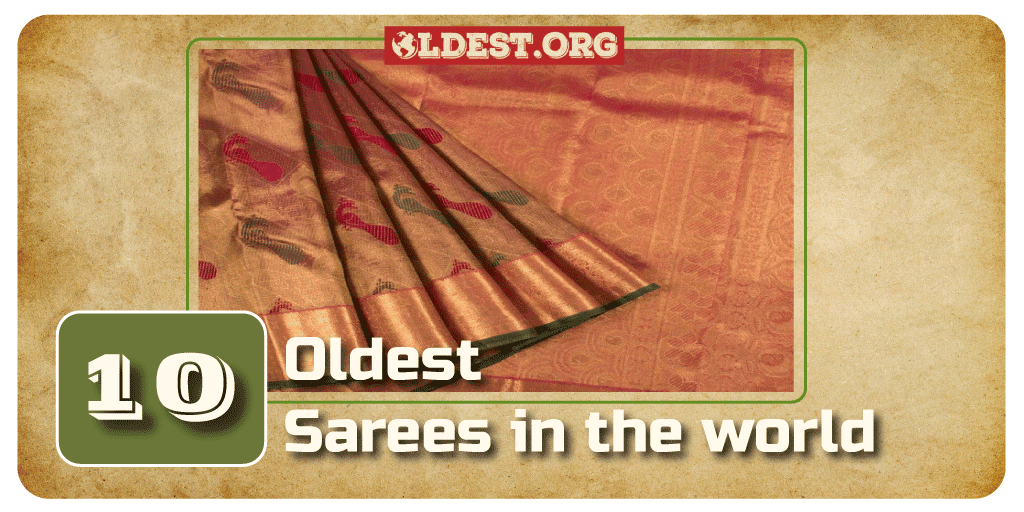It was only recently that the world started marveling at the aesthetic beauty of sarees. But Asians have been traditionally wearing careers for thousands of years. Sarees are typically long, unstitched cloth the women wear.
Though primarily used by Indians, the saree still is a relevant form of clothing in many parts of Asia. Sarees are believed to have begun being used during 2800 – 1800 BC. Starting its journey from the Indus Valley civilization in northwest India, the first fabrics used are believed to be cotton.
Today, there are numerous classifications of sarees based on region, fabric, weaving techniques, etc. Let us map through some classifications of the oldest sarees in the World.
10. Banarasi Silks
Origin: Varanasi, Uttar Pradesh
Age: Over 200 years
Notable Features: Rich brocade work, intricate designs, Mughal-inspired motifs
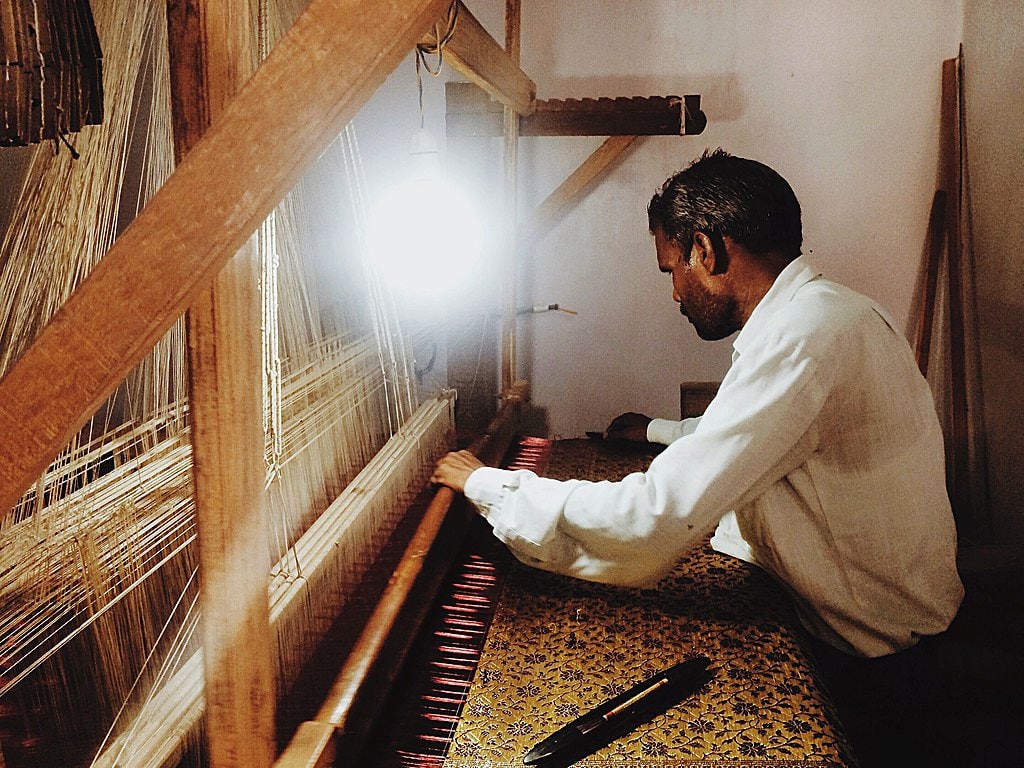
Banarasi sarees have gained immense popularity due to their rich craftsmanship, characterized by intricate brocade patterns crafted with threads of gold and silver. These remarkable sarees often exhibit Mughal-inspired floral motifs, trellis designs, and jaali patterns, showcasing the fusion of Persian art with Indian textiles.
Banarasi sarees have been highly popular for weddings for centuries and other special events, symbolizing unparalleled elegance.
Did you know?
Banarasi silk was initially exported to India from China. However, later Mughals brought the Banarasi craftsmanship to India with them.
9. Maheshwari Saree
Origin: Maheshwar, Madhya Pradesh
Age: Over 250 years
Notable Features: Reversible border, traditional coin designs, light, and sheer texture
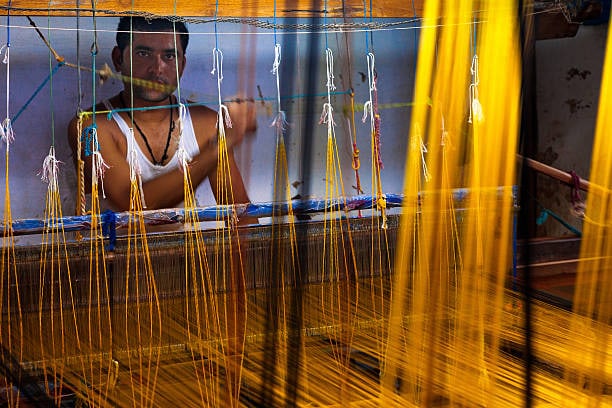
Maheshwari sarees are hand-woven fabrics known for their reversible borders, locally called ‘Bugdi.’ They feature traditional coin designs, floral art, peacocks, and geometric shapes, with a golden border and small booties all over.
Maheshwari sarees are known for their light and sheer texture, making them ideal for both formal and casual occasions.
Did you know?
There is a legend that, for gifting guests ad relatives, 9 yards sarees were ordered to be woven for the craftsman from Surat and Malva by the queen Ahilyabai Holkar.
8. Kota Doria Saree
Origin: Kota, Rajasthan
Age: Over 300 years
Notable Features: Open weave, delicate square patterns (Khats), lightweight
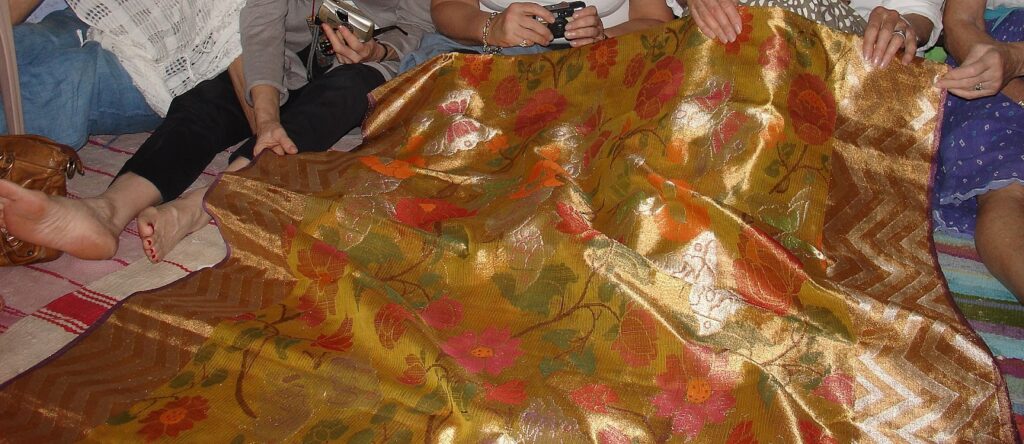
Kota Doria sarees are characterized by their open weave and delicate square patterns called “Khats.” They are crafted using cotton, silk, or cotton-silk blends, resulting in lightweight sarees that are perfect for hot and humid climates.
Kota Doria sarees are known for their simplicity and elegance, often featuring traditional motifs like mangoes, flowers, and checks.
Did you know?
Kota Doria sarees have checked weaves using pure cotton and silk, making them very popular.
7. Pashmina Saree
Origin: Jammu & Kashmir
Age: Over 300 years
Notable Features: Intricate pattern weaving, luxurious fabric, iconic motifs
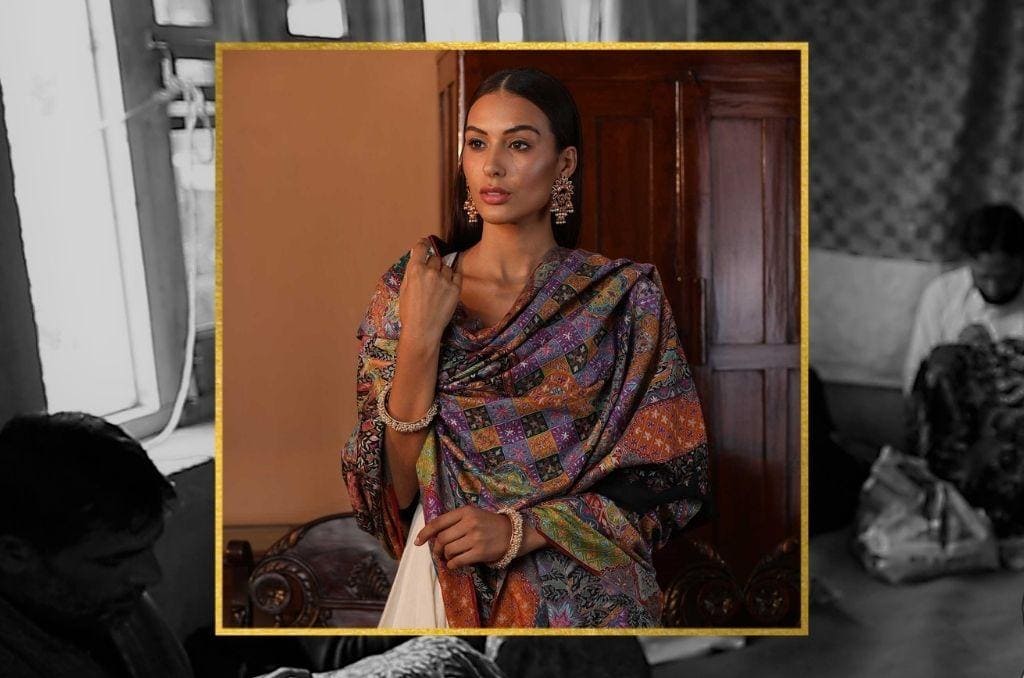
Pashmina sarees are crafted with rich and intricate pattern weaving, showcasing the skill of Kashmiri artisans. They often feature iconic patterns such as clusters of flowers, striped designs, chains, and paisley motifs.
Pashmina sarees are considered one of the finest art forms and are highly prized for their luxurious feel and timeless appeal.
Did you know?
Pashmina is made from a naturally shed coat of Changthangi goat from Ladakh.
6. Kanjeevaram Saree
Origin: Kanchipuram, Tamil Nadu
Age: Over 500 years
Notable Features: Rich silk, traditional motifs, intricate Zari work
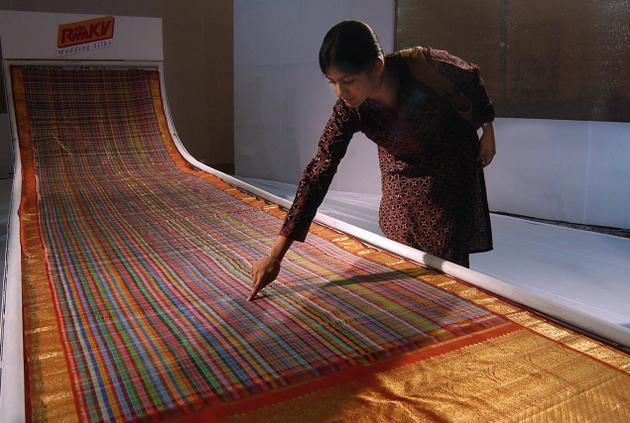
Crafted with soft silk fabric, Kanjeevaram sarees are renowned for their exquisite colors and distinguished weaves. They often feature traditional motifs like flowers, peacocks, and elephants, showcasing the cultural heritage of South India.
Kanjeevaram sarees are popular among brides and are considered a symbol of elegance and luxury.
Did you know?
Kanjeevaram sarees are quite heavy, and they typically weigh around 2 kilos. Not common for new-age outfits, huh?
5. Patola Saree
Origin: Patan, Gujarat
Age: Over 700 years
Notable Features: Double Ikat weave, vibrant colors, intricate patterns
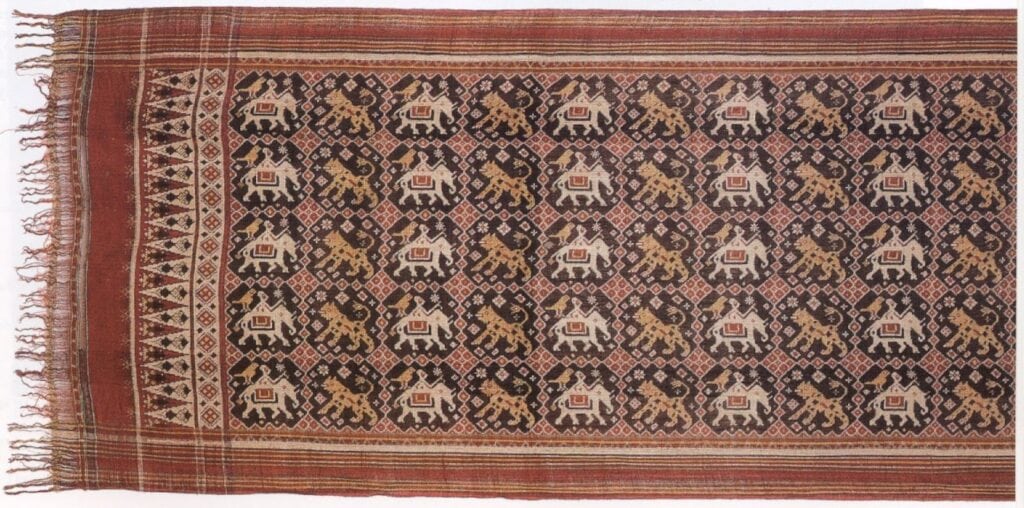
Patola sarees are known for their meticulous craftsmanship and vibrant colors achieved through the complex process of double Ikat weaving. These sarees often feature colorful floral details, animal motifs, and geometric outlines.
Patola sarees are treasured as heirlooms and are considered one of the most expensive and rarest sarees in the world.
Did you know?
The patola fabric is crafted by Salvi cast from the states of Karnataka and Maharashtra.
4. Chanderi Saree
Origin: Chanderi, Madhya Pradesh
Age: Over 700 years
Notable Features: Sheer texture, fine zari work, traditional motifs
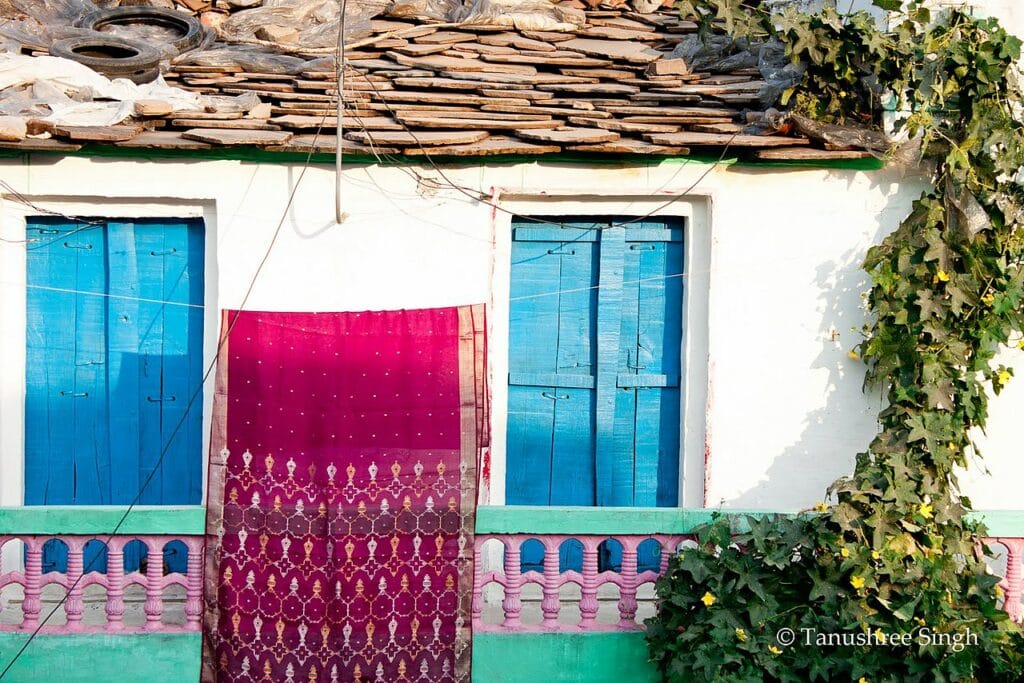
Chanderi sarees are renowned for their sheer texture and fine zari work, often depicting traditional motifs such as flowers, peacocks, and geometric patterns. They are hand-woven using silk, cotton, or silk-cotton blends, making them lightweight and comfortable to wear.
Chanderi sarees have been patronized by royalty for centuries and continue to be a symbol of elegance and grace.
Did you know?
In Hindu mythology, it states that Chanderi silk was brought about by lord Krishna’s cousin Shishupal.
3. Phulkari Saree
Origin: Punjab
Age: Over 700 years
Notable Features: Floral and leaf motifs, intricate embroidery, vibrant colors
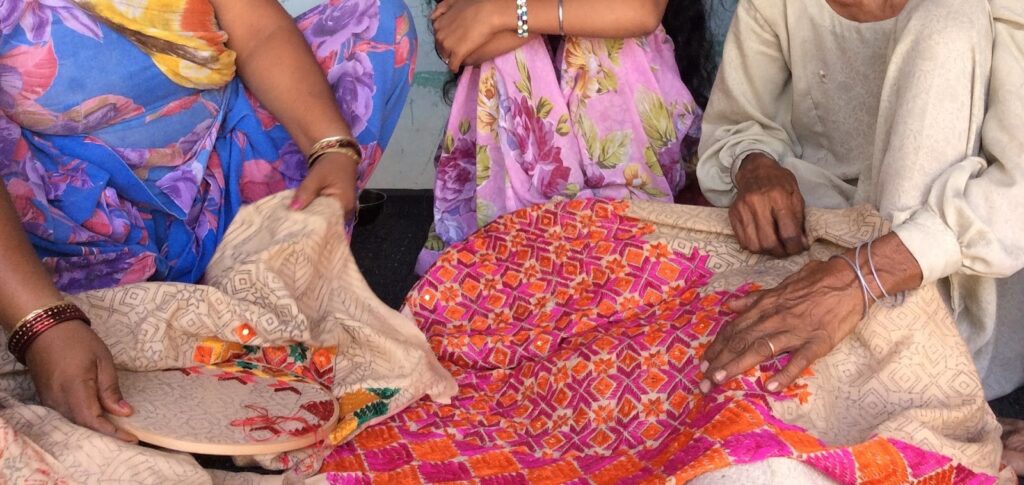
Phulkari sarees are known for their intricate embroidery work, featuring floral and leaf motifs created with horizontal, vertical, and diagonal stitches. They are often adorned with vibrant colors, reflecting the joyful and festive spirit of Punjab.
Phulkari sarees hold cultural significance and are treasured as a symbol of Punjabi heritage and tradition.
Did you know?
Phulkari is a folk embroidery introduced during the reign of Maharaja Ranjit Singh.
2. Bagh Saree
Origin: Madhya Pradesh
Age: Over 1,000 years
Notable Features: Hand block printing, vegetable dyes, geometric and floral motifs
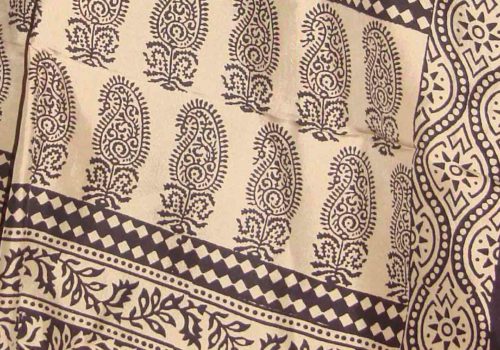
Bagh sarees are known for their hand block printing using vegetable dyes, creating intricate geometric and floral motifs. The motifs are often picked from nature and surrounding elements, reflecting the rural heritage of Madhya Pradesh.
Bagh sarees are treasured for their unique craftsmanship and earthy color palette, representing the cultural roots of the region.
Did you know?
Bhag saree prints are dyed with vegetable colors, making them truly authentic craftsmanship.
1. Ajrakh Saree
Origin: Gujarat and Rajasthan
Age: Over 4,500 years
Notable Features: Resist printing with natural dyes, bold geometric repeats, symmetrical patterns
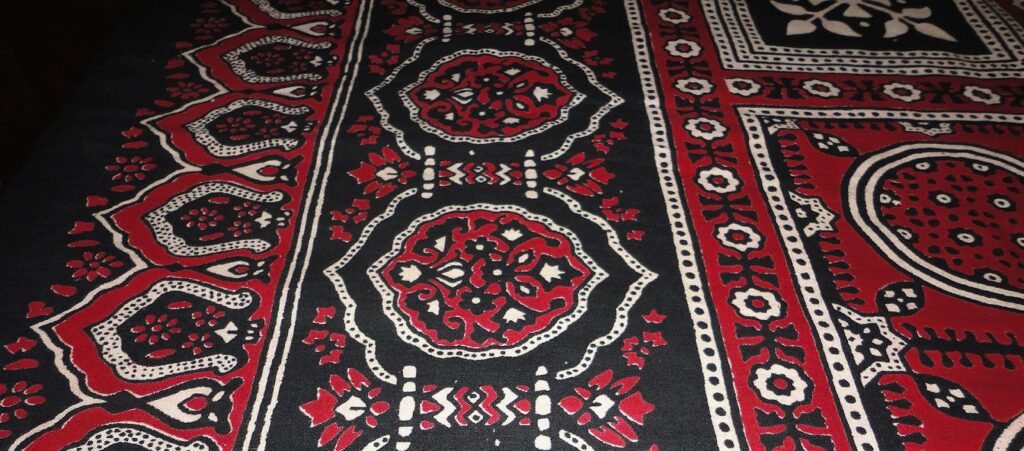
Ajrakh sarees are created through resist printing using natural dyes, resulting in bold geometric repeats and symmetrical patterns. Traditionally, these sarees are often dyed in natural red and black with a white cloth resisted on a dark indigo blue background.
Ajrakh sarees have a rich history dating back thousands of years, making them one of the oldest saree in the world, and they are cherished for their vibrant colors and intricate designs.
Did you know?
The term Ajrakh is derived from the Arabic word Azrak which translates to the color blue. Here, blue refers to the color Indigo. Indigo is extensively used in Ajrakh sarees as a backdrop, as mentioned before.
Conclusion
The oldest sarees in the world bear witness to the rich tapestry of Indian textiles and craftsmanship. From the opulent brocade work of Banarasi sarees to the delicate embroidery of Phulkari sarees, each piece carries the legacy of ancient traditions.
These sarees not only adorn women but also preserve cultural heritage and reflect the artistic ingenuity of generations past.
As we celebrate the timeless beauty of these sarees, we pay homage to the artisans who have dedicated their lives to the art of weaving and embroidery, ensuring that these ancient traditions continue to flourish.


